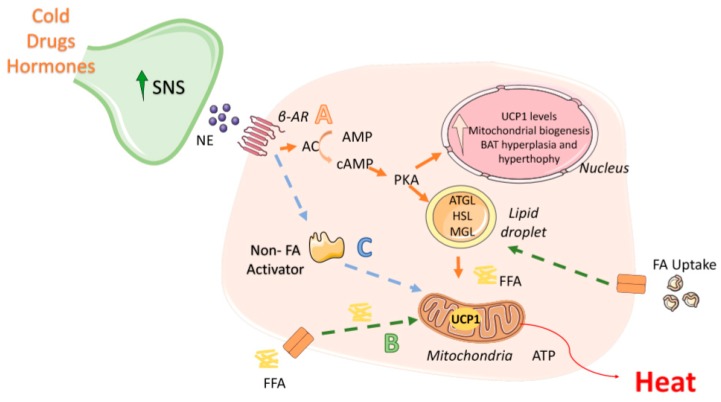Figure 2.
Brown adipose tissue activation. Currently, 3 models of brown adipose tissue (BAT) activation have been proposed. (A) (Orange pathway) In the classical model, β adrenergic receptors (β-AR) in brown adipocytes are stimulated by sympathetic nervous system (SNS) induced-release of norepinephrine (NE). These G-protein coupled receptors then activate adenylate cyclase (AC), inducing an increase in cAMP, which in turn activates protein kinase A (PKA). PKA acute effect increase lipolysis by the activation of adipocyte triglyceride lipase (ATGL), hormone-sensitive lipase (HSL) and monoacylglycerol lipase (MGL), which hydrolyse the triacylglycerides to release free fatty acids (FFA) that will enter the mitochondria and will eventually be used for heat production by uncoupling protein 1 (UCP1) in the electron transport chain. The chronic effect of PKA activation increases the expression of thermogenic related genes. (B) (Green pathway) A second model has been proposed in which thermogenesis is possible even in the absence of ATGL or associated enzymes, mainly by BAT capturing FFA released by white adipose tissue (WAT) and using them as activators and substrates of UCP1. (C) (Blue pathway) A third model includes the stimulation of brown adipocytes by NE, where a “non-fatty acid” activator activates UCP1 allowing the use of external FFA for the thermogenic process.

